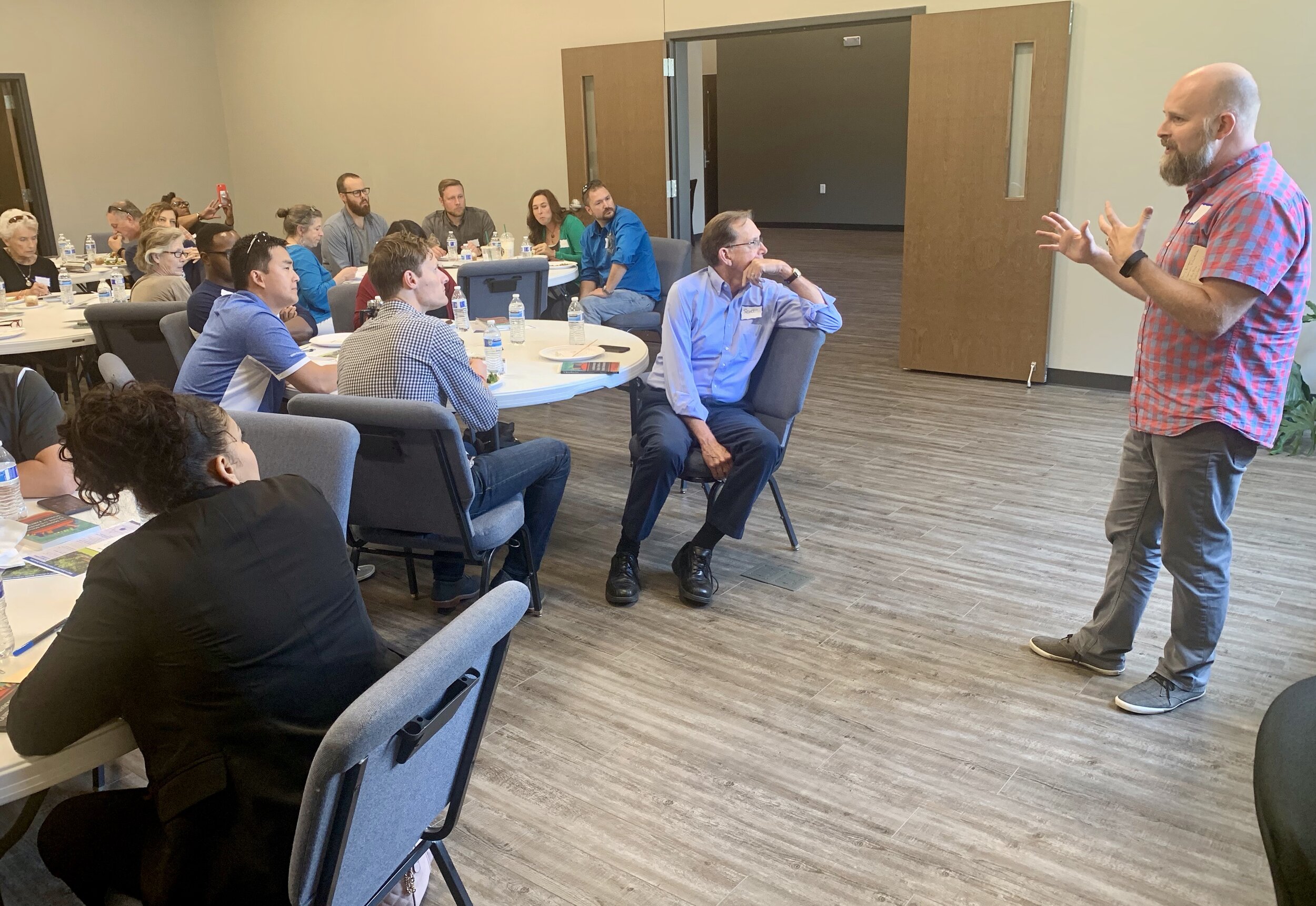Churches + School = partnerships
Kathy Price and Mary Bartzen tell church leaders about the ins and outs of school partnerships.
By Phil Haslanger
Collaboration Project Story Team
They gathered for lunch and advice, for sharing experiences and gaining ideas.
They were representing a wide spectrum of churches from across Dane County - mainstream and evangelical, large and small, well-established and just starting up.
They were at Redeemer City Church in Fitchburg to learn about ways to partner with schools, to help students achieve success in the midst of all the challenges young people - and teachers - face in 2019.
This was a meeting of the Collaboration Project’s Schools Affinity Group - an effort to connect churches who are partnering with schools and to encourage others to get involved.
“We have all different kinds of partners and they have all different kinds of skills,” Mary Bartzen told the lunch crowd. She is the community partnerships director for the Foundation for Madison’s Public Schools - the point person for seeking to explore and/or establish adopt-a-school programs.
She outlined the way partnerships work, whether for churches, businesses or other community groups. They involve a one-year commitment that connects human, material or financial resources to a specific school.
Bartzen suggested starting out by assessing what level of commitment people in a church or other group have for a partnership. Some churches have monthly pen-pal programs. Others provide treats for teachers, while still others work directly with students on projects. There may be a back-to-school picnic or a mitten drive for the winter. Some provide financial assistance for their schools. Matching the needs of a school with the interests and capacity of a particular partner help to sustain the effort.
Schools are asked to provide a menu of volunteer opportunities and list of material needs so that the help offered is truly beneficial.
“We ask partners to underpromise and overdeliver,” Bartzen said. That way, everyone feels like the effort was worthwhile.
She also talked about the focus of these partnerships - “to serve our students.” So whatever the organization involved, they need to “leave their personal business at the door and come to serve.” Insurance companies that volunteer are not there to push their insurance products. A flooring business is not there to recruit new customers. Churches are not there to spread their faith.
Once a partnership is in place, there are elements that help make it successful. A key one is having point people for communication, said Kathy Price, scholarships coordinator for the Madison Metropolitan School District who has many years of experience working with community partnerships.
Both the community partner and the school need “a real clear idea of what the goal is and make sure everyone is on board.” There should be an agreement that spells out the responsibilities of each party.
Price also noted that there can be bumps along the way. She urged partners to “recognize that we have good intentions and cut each other some slack. Give people the benefit of the doubt.”
People who work directly with children in schools need to have a background check, explained Katherine Cubilette, a senior program assistant for the Madison schools. And when volunteers come into a school, they need to check in at the school office.
After the presentations, church representatives gathered around tables shared their experiences with one another and some of the challenges they have faced.
Jon Anderson, executive director of the Collaboration Project, said that updates would be provided on the group’s Facebook page and a Google document will be created where people share ideas and resources. There will be another Schools Affinity Group meeting in November that will include looking at how churches can partner in a major food drive during the winter months.
Jon Anderson, executive director of the Collaboration Project, describes some of the next steps.
Sharing these stories is possible thanks to our amazing donors. We invite you to partner with Collaboration Project to help us tell stories that highlight how God is working in and through the local church.




